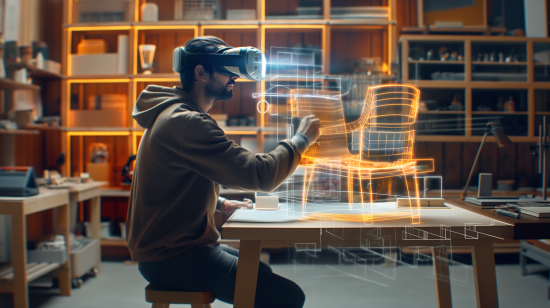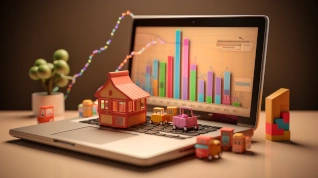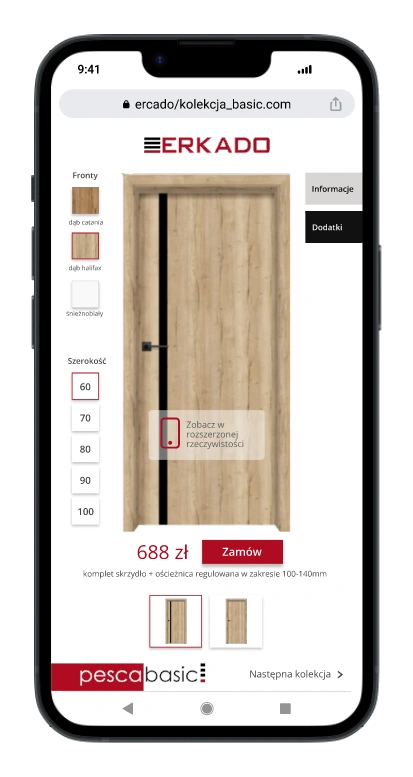What is Mixed Reality technology and how does it work?

In our era the blurring of boundaries between the physical and the digital world is becoming more apparent. A stark example of this trend is Mixed Reality (MR) technology, which is becoming a key player in the current technological revolution. By integrating aspects of Virtual Reality (VR) and Augmented Reality (AR), MR enables extraordinary forms of interaction, learning, and entertainment that were previously unattainable. From revolutionizing medicine and business to groundbreaking changes in education and training, to the evolution in commerce and design. The question arises: what exactly is MR? How does it function? These questions are answered in the remainder of the post.
What is Mixed Reality (MR?)
Mixed Reality (MR) is an innovative digital interaction technology that blends elements of Virtual Reality (VR) and Augmented Reality (AR).
What sets MR apart is its ability to create a unique experience where the virtual world seamlessly coexists with the real world. In a mixed reality space, users not only see digital elements overlaid on their surrounding reality but can also interact directly with them. This makes MR a gateway to a completely new way of perceiving and experiencing the digital world – it's like a bridge connecting the virtual with the reality we live in every day. Whether in education, medicine, business, or entertainment, MR transforms the way we learn, work, and play, offering richer experiences than ever before.
How does Mixed Reality work: merging virtual and real worlds
At the core of Mixed Reality technology is an advanced simulation that merges virtual and real worlds, creating a cohesive and interactive environment. But how does it function?
The foundation of MR involves the use of high-end sensors, cameras, and specialized software, which collectively track the user's movements and position. This enables the precise placement of virtual objects in physical space. For instance, in the MR world, we might see a virtual piece of furniture (you can create this with 3D product configurator from SeeMyModel) in our living room and walk up to “touch” it or witness a virtual character interactively responding to our movements. This blending of the real and digital worlds is so seamless that the boundary between them becomes almost imperceptible. With MR users can manipulate virtual objects as if they were physical parts of their environment, opening new possibilities in digital content interaction and enriching everyday experiences. This unique ability to combine two worlds not only marks MR as a next step in technology evolution but also as a true bridge between reality and the realm of imagination.
Understanding the differences between MR, VR and AR: key nuances
Grasping the differences between Mixed Reality (MR), Virtual Reality (VR), and Augmented Reality (AR) is essential for appreciating the potential of each technology.
It's important to know that augmented reality (AR) and virtual reality (VR) are two different technologies that change the way we experience and interact with our surroundings. The main difference between them lies in how each of these technologies connects the virtual world with the real one.
- Let's start with VR – this technology immerses the user completely in a digitally created world, cutting them off from the physical reality. In VR, the user is transported to another dimension, where everything they see and experience is generated by a computer.
- In contrast, AR does not disconnect us from the real world, but rather superimposes a layer of virtual objects onto it. With AR, we can see digital information or objects that seem to exist in our surroundings, but there's a limited ability to interact deeply with them.
- This is where MR comes into play, blending elements of both these worlds. MR allows for full interaction with virtual elements placed in a real environment. We can not only see virtual objects in our room but also grab, move, or even interact with them. Thus MR combines the immersion of VR with the interactivity of AR, creating a new quality of digital experiences.
Practical applications of MR – from medicine to business
Mixed Reality (MR) technology has a wide range of applications across various sectors, revolutionizing how we work, learn, and care for our health. In the medical field, MR introduces innovative methods for diagnostics and surgical planning, enabling doctors to visualize organs in 3D and simulate complex surgical procedures. This significantly enhances medical precision and patient safety. In business, MR is transforming the way meetings, presentations, and remote collaborations are conducted. Through mixed reality, teams dispersed globally can work together in virtual spaces as if they were in the same room, boosting efficiency and creativity.
MR in education and training: a revolution in learning and professional development
In education and professional training, MR represents a groundbreaking development. It allows for the creation of interactive and immersive teaching programs that transform conventional educational methods. Students and professionals can experience realistic simulation scenarios, greatly facilitating the understanding of complex concepts and the development of practical skills. From simulating physical experiments in the classroom to virtual training in professional environments, MR offers limitless opportunities for learning and development.
Enhancing shopping and entertainment experiences with MR
In the retail world MR enables virtual try-ons of clothes or viewing products in 3D before making a purchase, altering the way we make buying decisions. In entertainment – from games to virtual concerts, Mixed Reality immerses users in enriched, interactive worlds, allowing them to fully dive into experiences previously unknown.
MR in architecture and engineering: a new dimension in design
In the fields of architecture and engineering, MR allows architects and engineers to visualize projects in true scale significantly simplifying the design process and concept verification. Thanks to MR, models can be displayed in the spaces where they will actually be built, providing a better understanding of the context and scale of the projects. This contributes to more efficient and innovative designing, opening new horizons in the construction and engineering industry.
Discover the power of 3D product visualization.
The future of Mixed Reality technology: innovations and development perspectives
The future of Mixed Reality (MR) technology appears extremely promising, opening new frontiers of innovation and setting developmental directions in various sectors. As this technology matures, we can anticipate its increasingly broad application in both everyday life and professional industries. In the future, MR may revolutionize the way we communicate, work, and learn, offering even more integrated and interactive experiences. We are already witnessing advancements in device miniaturization and software development, suggesting that MR will become more accessible and convenient to use.
The extraordinary potential of MR to create realistic, immersive environments may find application in yet undiscovered fields such as remote education, advanced training simulations, and even in human resource management and personal development. We can also expect that MR will play a key role in future research and development, assisting in testing new products and services in ways currently seen as impossible.
In a social context, MR could offer new ways of interaction and building connections between people, regardless of geographic distances. Social and entertainment interactions in virtual spaces might become the new norm, allowing individuals from different parts of the world to share common experiences. Additionally, as technology evolves, we can expect MR to increasingly integrate with other advanced technologies such as artificial intelligence, opening new horizons for intelligent, automated environments.
Do you like the post? Share to others!

Krzysztof Basista
COO
For years, he has been involved in AR / VR projects ranging from entertainment to heavy industry. Always looking for problem solving through technology.
Contact us
Related posts

In today's fast-paced technological world, one of the most fascinating achievements is augmented reality (AR).

In the era of digital transformation, consumer behaviors have undergone significant changes, redefining the way we make purchasing decisions and interact with brands. In this article...

In the era of digital commerce, where competition is at an all-time high and customer expectations are rising, the use of innovative technologies is becoming a key factor...

Today, retail stands at the crossroads between adaptation and revolution, facing rapidly changing technological trends. In our article today, we will explore how modern...

Augmented reality (AR) is a technology that combines the physical and digital worlds to create an interactive experience. AR technology is used in a variety of industries...

Have you ever wondered how to make your product stand out in the thicket of competition that is constantly flooding the market? How to make it your novelty that catches...






